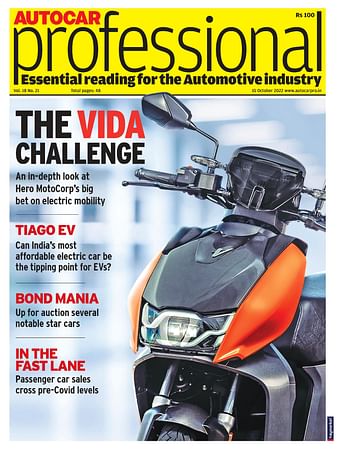Ford looks to ease traffic commute with new stop-and-go tech
When activated stop-and-go automatically accelerates and brakes for the driver while maintaining a safe distance from the vehicle ahead.
Tired of traffic? A new technology from Ford’s makes the car stop and go on its own to ease stressful commutes.
The new stop-and-go technology is available for the 2017 Fusion, which piggybacks on the existing adaptive cruise control feature. When activated stop-and-go automatically accelerates and brakes for the driver while maintaining a safe distance from the vehicle ahead.
Using dedicated steering wheel buttons, adaptive cruise control with stop-and-go allows drivers to set cruise control speed and following distance from the vehicle ahead. The semi-autonomous technology can automatically adjust the set speed for comfortable travel – much like a human driver would – bringing the car to a full stop when traffic halts. If the car has to stop for more than three seconds, the driver can tap the resume button or accelerator and the car returns to its preset speed. This assures the driver is paying attention in the event of a long pause in traffic.
Adaptive cruise control employs a combination of sensors and software. When activated, the technology uses an advanced radar-and-camera based system, which reads the road every 50 milliseconds – tracking traffic and adjusting Fusion’s cruise control according to traffic flow. In slow traffic, with minimal driver input, the car can automatically brake itself to a stop, then resume travel up to set speed and following distance.
Scott Lindstrom, Ford driver-assist technologies manager commented, “When testing this system, we traveled to cities like Chicago and Los Angeles, heading straight for the worst possible congestion. It was important for us to test this system under conditions the average driver encounters every workday.”
Adaptive cruise control with stop-and-go is a great tool for dealing with traffic, but for unpredictable moments Pre-Collision Assist with Pedestrian Detection, part of the overall technology, employs the same sensors and camera to watch the road ahead for potential collisions with a vehicle or pedestrian. When a situation is detected, the system provides a visual and audible warning to the driver, pre-charges the brakes and, if necessary, can then automatically apply up to full braking force. This can help reduce the severity of, or even eliminate, some frontal collisions.
More from Ford:
- Company to to invest US$ 1.6 billion in small car plant in Mexico
RELATED ARTICLES
Sept 2024 From R&D incentives to EV infrastructure: What auto components industry expects from Budget 2024
Sept 2024 From R&D incentives to EV infrastructure: What auto components industry expects from Budget 2024
US car majors hit the brakes on driverless cars
Ford Motor and Volkswagen to close self-driving startup Argo AI, due to lack of technology and clear regulations.
Autoliv and Geely to develop advanced safety tech for future vehicles
Scope of cooperation includes safety for high-level autonomous driving, intelligent steering wheel technology, a 360deg ...






 By Autocar Pro News Desk
By Autocar Pro News Desk
 06 Apr 2016
06 Apr 2016
 3363 Views
3363 Views









